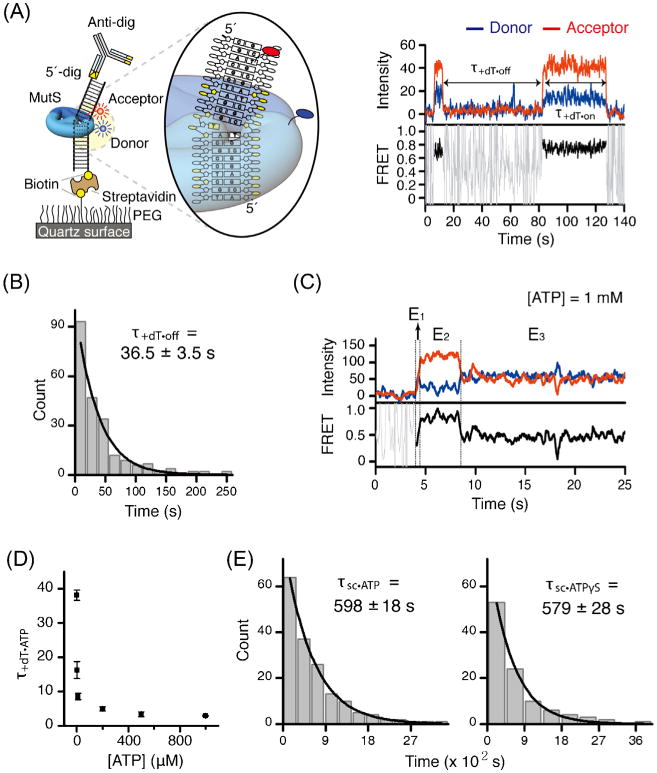Fig. 3.

TaqMutS forms a remarkably stable clamp on mismatched DNA. (A) Left: the schematic representation of the smFRET system that directly monitors the interaction between Cy3-TaqMutS (donor) and a Cy5-labeled (acceptor) DNA containing a +dT mismatch (see Fig. 2C). Right: a representative time trace of donor-acceptor intensity and the resulting FRET efficiency. (B) The lifetime of TaqMutS on +dT mismatch in the absence of ATP. (C) A representative time trace in the presence of ATP (1 mM) showing three FRET transitions: E1 searching TaqMutS, E2 mismatch binding TaqMutS, and E3 ATP-bound sliding clamp TaqMutS. (D) The lifetime of TaqMutS on the +dT mismatch at various ATP concentrations. (E) The lifetime of ATP-bound TaqMutS (598 s) and ATPγS-bound TaqMutS (579 s) sliding clamps.
